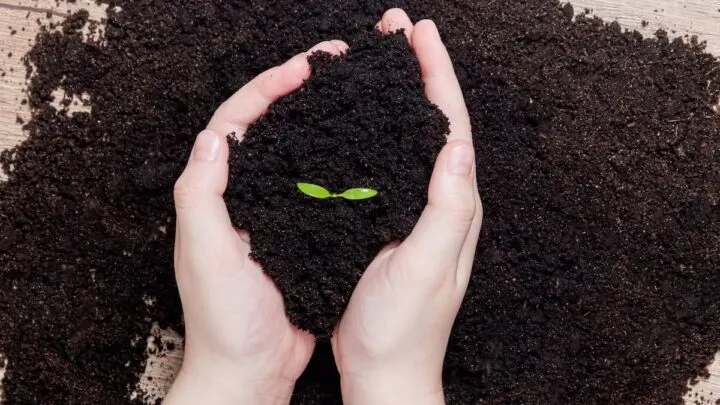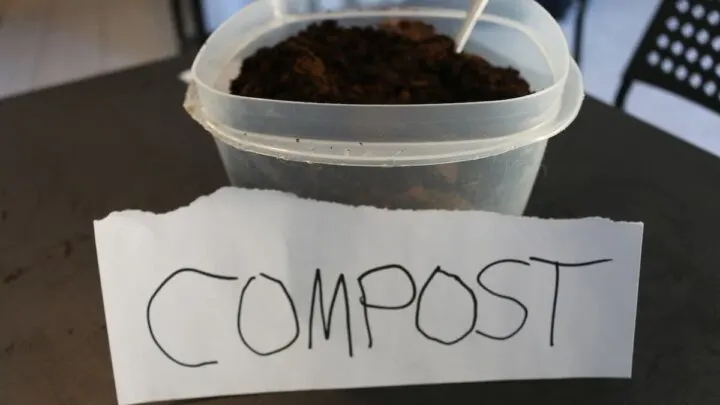Often, growing the perfect tomato depends on the nutrients in the compost or fertilizer that you use to plant your plants. Tomatoes need nutrients like nitrogen, magnesium, calcium, and phosphorous in order to grow and create delicious juicy fruit. Ericaceous isn’t necessarily the right kind of compost we are looking for, but can you grow tomatoes in Ericaceous compost?
You cannot effectively grow tomatoes in Ericaceous compost. Ericaceous compost is compost high in acidity. With a pH of around 5, it is much too high in acidity for tomatoes. Tomatoes grow best in anything from 5.8-to 7.0. So, it’s pretty much a gamble if you’re using Ericaceous compost for tomatoes.
Stay tuned; in this article, we will discuss the suitable compost for tomatoes and why Ericaceous Compost may be a better idea for different plants.

What is Ericaceous Compost?
As we’ve mentioned earlier, Ericaceous compost is compost with very high acidity. It measures out well below 7.0, at around a 5. Ericaceous refers to a type of plant that prefers and thrives in soil that is acidic to neutral and will not thrive in soils that are more alkaline or “limey.”
If you find yourself with a bountiful amount of ericaceous compost, the best thing to do is to start a berry garden! Blueberries especially prosper in the highly acidic soil.
How Do You Make Ericaceous Compost?
Here are the steps in making Ericaceous compost.
- Buy a compost bin, or have a compost heap outside
- Make sure your bin or pile is where water won’t pool up, somewhere in the shade.
- Make sure you have pH test strips to test the levels of your soil
- The very first layer of your compost should be a layer of twigs, dead leaves, and sticks
- The next layer will consist of all your green material: grass cuttings, vegetables, fruits, flower cuttings
- On top of that, you can mix in brown material: bits of cardboard, leaves, twigs, straw, paper, sawdust
- Make sure everything you add is equally distributed
- Build the pile up to about 5 feet, keep it damp but do not waterlog it
- Here is what you can add to make sure your compost is acidic (ericaceous)
- Beech and oak leaves
- Pine needles
- Coffee grounds
- Citrus peels
- Fresh sawdust and bark
- Onions
- Add sulfur or iron sulfate to boost that acidity
Tips for making ericaceous compost (what not to add)
- Tap water usually is high in alkaline, so use rainwater instead
- Lime, lime has a high alkaline content
- Calcium products
- Meat, poop (from human or animal), bones, plastic, glue
Ways To Make Soil More Acidic
If you are looking to make your soil more acidic, these are the best ways to do so.
Sulfur is the strongest way to make your soil more acidic. However, it is also the longest way. Sulfur takes about six months to kick into the soil. But, it only takes a minimal amount of work.
Peat Moss is very effective, working its way into the soil quickly while also bringing supportive microorganisms to the soil.
Ammonium Sulfate can be tricky but is another good way to make your soil acidic. It is best used on individual plants as topsoil. However, you must be careful with the amount of use because it can act quickly and be very strong and lower the pH too quickly. This will cause root damage.
Aluminum Sulfate is not highly recommended. It can be dangerous to use, especially with plants you plan to eat. Although it is very effective, it can pass metals onto the plants, making you sick once you eat the vegetables.
Ways To Make Soil Less Acidic
If you are looking to make your soil less acidic, here are the best options for you.
Lime naturally contains calcium and magnesium carbonate made from limestone rock. Lime is the most common and best way to make your soil less acidic. Lime is water-activated. So it’s best sprinkled on top of your soil and then watered in. Even though lime has many healthy nutrients your plants need, do not substitute it for fertilizer.
Dolomite can take a little while to work, as it dissolves slowly over time. Dolomite is a great source of calcium and magnesium and works very well at bringing up the ph.
Why isn’t Ericaceous Compost the Best for Tomatoes?
Since Ericaceous compost measures out at a five on the pH scale, one being the most acidic, it is much too high for tomatoes which like soil at around 5.8-7.0. However, this isn’t to say that it won’t work since it’s almost in the right ballpark for tomatoes. However, it is not the right compost for your tomato plants.
Since is there is no lime or alkaline in Ericaceous compost, you would most likely need to add some if you did plant your tomatoes in it. It would also be more important to feed your tomato plants with a liquid feed or add other composts to keep up with the nutrient intake.
What Happens When Soil Is Too Acidic?
Unless you have plants that love acidic soil (see list below), your plants will have difficulty thriving. Soil that is too acidic can decrease the availability of healthy nutrients, allow for toxic elements to come into the soil, decrease plant production, stunt growth and affect the role that nutrients have on the plants.
What Can I Grow in Ericaceous Compost?
Ericaceous compost is suited best for Ericaceous plants. These plants include (but are not limited to):
- Rhododendron
- Camellia
- Azalea
- Heathers
- Lupines
- Juniper
- Berries
- Blueberries
- Huckleberries
- Bayberry
- Inkberry
All of these plants need acidic soil. Otherwise, they won’t have the proper nutrients to grow. Their leaves will be yellow, and they may not fruit or flower the way they are supposed to.

What Compost is Best for Tomatoes?
The compost for tomatoes is organic and drains well but holds moisture. We also want to look for a pH between 5.8-7.0. Sandy loamy soil is the perfect soil for tomatoes as the small particles hold nutrients and moisture, but it is free draining.
At the garden store looking for compost for your tomatoes? Below is a list of the top brands for tomatoes right now.
- FoxFarm Ocean Forest Organic Soil
- Black Gold Organic Soil
- FoxFarm Happy Frog Potting Soil
- Westland- John Innes Number 2
Now that we have discussed everything there is to know about ericaceous compost and its uses, I hope there is a better understanding that when you’re thinking about what soil to use for your tomatoes, something a bit less acidic is the way to go! But if you find yourself buried in this acidic compost, maybe it’s time to consider being a berry grower.

Hi there, my name is Allie and welcome to my blog; GareningWithAllie!
Much of what you see written here is just our personal experiences with gardening. Along with the content I write here, there is also a unique collection of gardening topics covered by some of our close friends. I hope you find everything you read here to be helpful, informative, and something that can make your gardening journey the most lovely experience ever! With that said, Happy Gardening!
